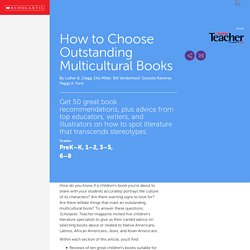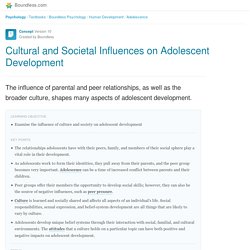

The Absolutely True Diary of a Part-Time Indian (8601401248767): Sherman Alexie, Ellen Forney: Books. The Hate U Give - Social Justice Books. Why Am I Me? by Paige Britt. From Miss Ida's Porch by Sandra Belton. Hiroshima Book. Multiculturalism in the Classroom. Too Many Tamales by Gary Soto Read Aloud. How to Choose Outstanding Multicultural Books. How do you know if a children's book you're about to share with your students accurately portrays the culture of its characters?

Are there warning signs to look for? Are there telltale things that mark an outstanding multicultural book? To answer these questions, Scholastic Teacher magazine invited five children's literature specialists to give us their candid advice on selecting books about or related to Native Americans, Latinos, African Americans, Jews, and Asian Americans. Within each section of this article, you'll find: Reviews of ten great children's books suitable for grades K–8Essential advice from a children's author or illustrator: Joseph Bruchac, Gary Soto, Floyd Cooper, Patricia Polacco, Yumi HeoKey criteria to use when selecting booksA list of notable authorsAnd more! Our experts also helped us compile an extensive list of other multicultural resources for teachers and their classrooms.
Native Americans: Let Our Words Be Heard By Peggy K. 10 Great Children's Books Keep in Mind. Diversity Printables, Lessons, and Resources. Teach students to respect differences among people in their community and around the world by using the resources below for elementary, intermediate, or high school students. Middle school lesson plans. The Jacket by Andrew Clements. It's Not So Black and White: Discussing Race and Racism in the Classroom. Discussing racial issues can make students and teachers uncomfortable.

Here, educator and scholar Dr. Beverly Tatum shares her wisdom on teaching about slavery and race-related issues. Classroom teachers across the country are faced with explaining the central paradox of a democracy that declared all men equal but enslaved and oppressed one group to provide independence and prosperity for another. The task is difficult because your audience is children. Slavery is a topic that makes many of us uncomfortable. Too often I hear from young African American students that they feel embarrassment in school when slavery is discussed. In my professional-development work with white teachers, they sometimes remark how uncomfortable they, too, are with this example (and others) of the painful history of race relations. Something is wrong. The Africans who were brought here as slaves were not just passive victims.
Sui and Tang Dynasties. Although the Han had been destroyed, the ideal of a centralized empire had never disappeared; it was left to the shortlived, native Chinese dynasty, the Sui (581–618), to fulfill that ideal.

But the labor and tax burden of the Sui public works projects — such as the reconstruction of the Great Wall and the fashioning of a Grand Canal> linking the northern capital region with the newly rich agricultural centers of the Yangtze River valley — compounded by ruinous military campaigns against northern Korea, generated popular rebellion and led to the speedy demise of the dynasty. Yet the Sui laid the foundations for another glorious age, that of the Tang (T'ang; 618–906), which at its height controlled a pan-Asian empire stretching from Korea to the borders of Persia. Copyright © 2006 Grolier Incorporated. All Rights Reserved. My Multicultural Self.
Diversity Lesson Plans: Middle School. How Culture Differences Affect Teenagers. The Influence of Environment - The Science of Adolescent Risk-Taking: Workshop Report - NCBI Bookshelf. Culture and Adolescent Development. Cultural and Societal Influences on Adolescent Development. The relationships adolescents have with their peers, family, and members of their social sphere play a vital role in their development.

Adolescence is a crucial period in social development, as adolescents can be easily swayed by their close relationships. Research shows there are four main types of relationships that influence an adolescent: parents, peers, community, and society. When children go through puberty in the United States, there is often a significant increase in parent-child conflict and a decrease in cohesive familial bonding. Arguments often concern new issues of control, such as curfew, acceptable clothing, and the right to privacy. Parent-adolescent disagreement also increases as friends demonstrate a greater impact on the child; this is especially true when parents do not approve of new friends' values or behavior. The parent-child relationship. How Cultural Differences Influence Adolescent Development.
The parents of adolescents have the main responsibility of teaching children ethics.

Scholars of adolescent behavior and authors of "Family and Peer Influences on Adolescent Behavior and Risk-Taking," Nancy Gonzales and Kenneth Dodge, note that while much of adolescent development happens outside the home, the culture of the family instills upon children their developmental roots. Parents coming from difference cultures emphasize different value sets and therefore teach their children different moral standards. For example, because honesty is an important concept in the West, American parents urge their children not to lie, even in situations where lying would be beneficial. On the contrary, parents from East Asia tend to focus on creating a sense of both social and family harmony. These parents are more willing to overlook lies, provided those lies contribute to harmony, such as in white lies that avoid hurting others' feelings.